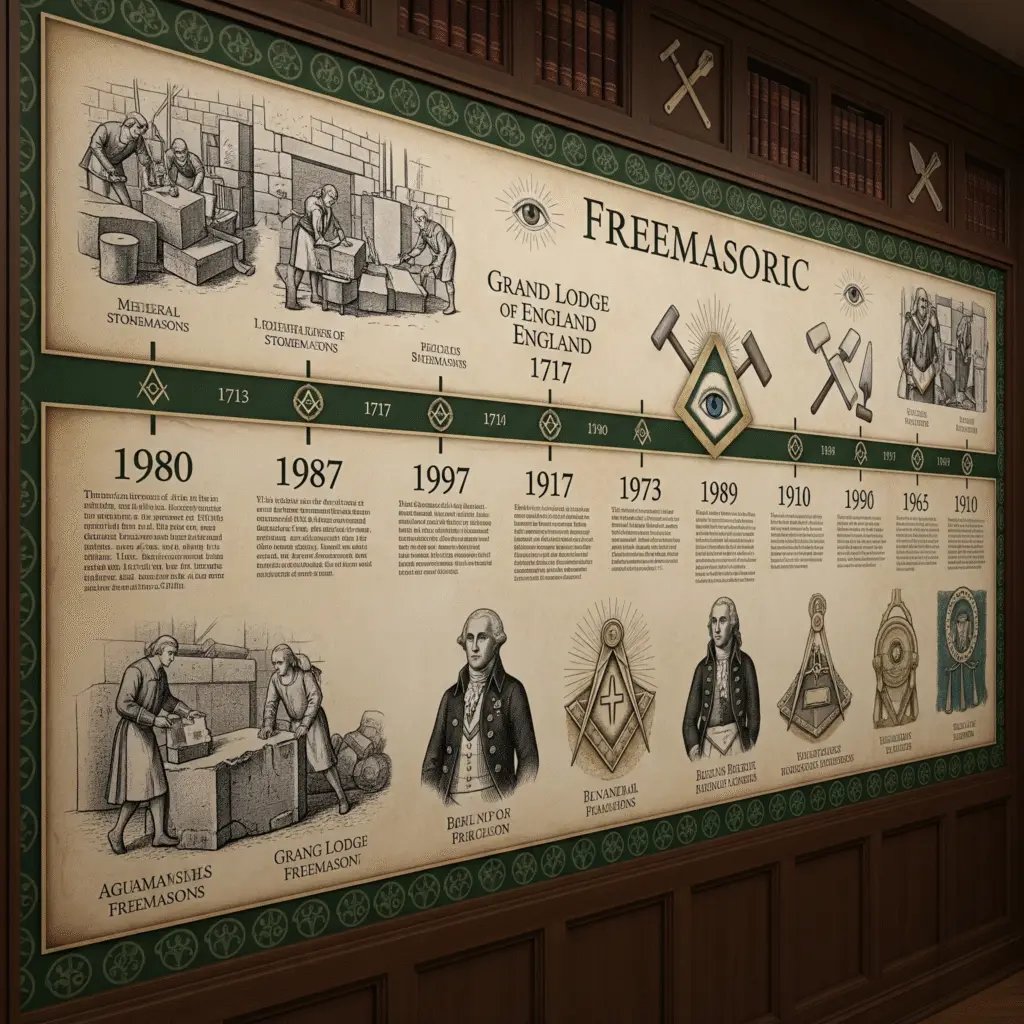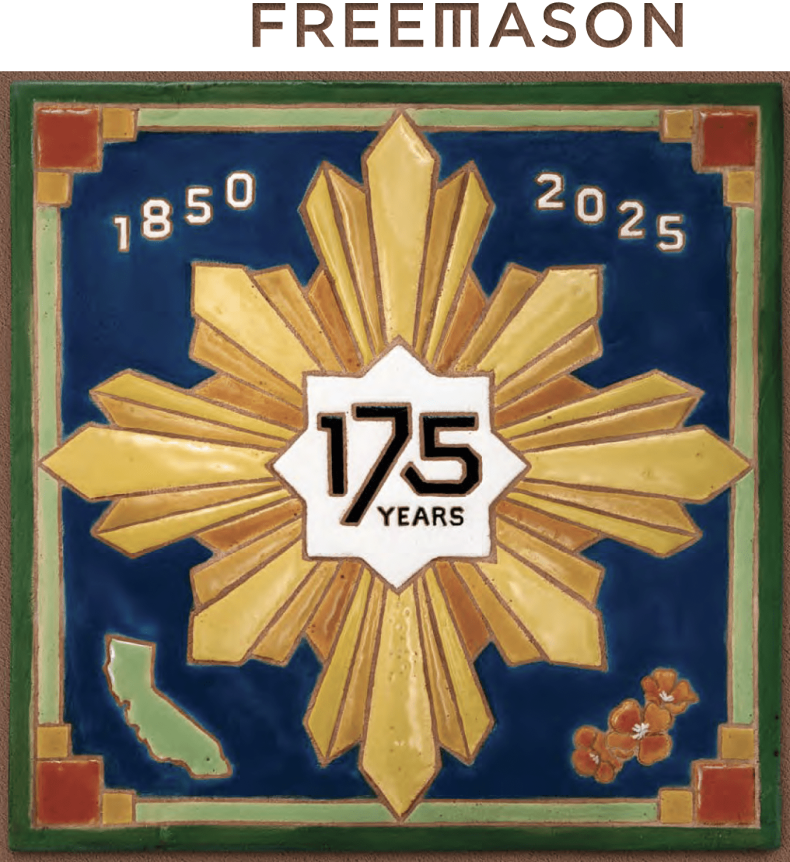A Timeline of 175 Years of North America Freemasonry
The history of Freemasonry spans centuries, with its origins tracing back to the guilds of stonemasons who built the great castles and cathedrals of the Middle Ages. From these “operative” origins, it evolved into the modern, “speculative” fraternity we know today.

Here is a timeline of key events in Masonic history:
Early Origins (Middle Ages to 17th Century)
- Medieval Era: The most widely accepted theory is that Freemasonry descends from the guilds of working stonemasons. These guilds had secrets, passwords, and traditions to protect their trade knowledge.
- 1390: The Regius Poem, the oldest known Masonic document, is written. It describes a code of conduct for masons and contains the earliest known allusions to the craft’s practices.
- 1600s: The first recorded instances of “speculative” or “accepted” Masons—men who were not stonemasons by trade—joining lodges in Scotland and England. This marks the beginning of the transition from an operative to a modern fraternity.
- 1646: Elias Ashmole, a prominent English antiquary, records his initiation into a Masonic lodge in Warrington, England, one of the earliest documented initiations of a non-operative Mason.
The Birth of Modern Freemasonry (18th Century)
- 1717: On June 24, four existing London lodges meet at the Goose and Gridiron Tavern and form the Grand Lodge of England. This event is considered the official birth of modern, organized Freemasonry.
- 1723: James Anderson publishes “The Constitutions of the Free-Masons,” a key document that codifies the laws, regulations, and principles of the fraternity, helping to standardize practices.
- 1751: A rival Grand Lodge, known as the “Antients,” is formed in London by lodges that disagreed with the changes made by the original Grand Lodge (“the Moderns”). This schism lasted for over 60 years.
- 1776: Freemasonry plays a significant role in the American Revolution, with many of the Founding Fathers, including George Washington and Benjamin Franklin, being Masons.
Unification and Global Expansion (19th Century to Today)
- 1813: The two rival Grand Lodges in England unite to form the United Grand Lodge of England (UGLE), which becomes a model for Grand Lodges around the world.
- 19th Century: Freemasonry expands rapidly across the globe, following the spread of the British Empire and the development of new nations.
- 20th Century: The fraternity’s numbers grow significantly, particularly after the two World Wars, as servicemen sought to continue the bonds of camaraderie. This is also when Masonic philanthropy, like the Shriners Hospitals for Children, gains international prominence.
- Present Day: Freemasonry continues to evolve, maintaining its core values while adapting to the modern world, with a continued focus on brotherhood, charity, and self-improvement.

